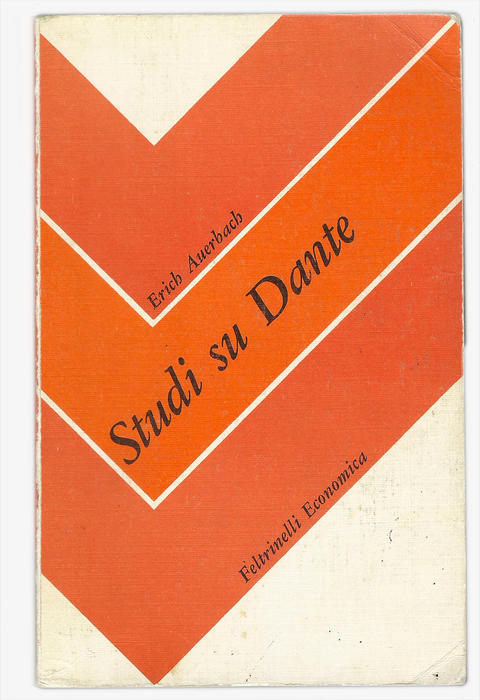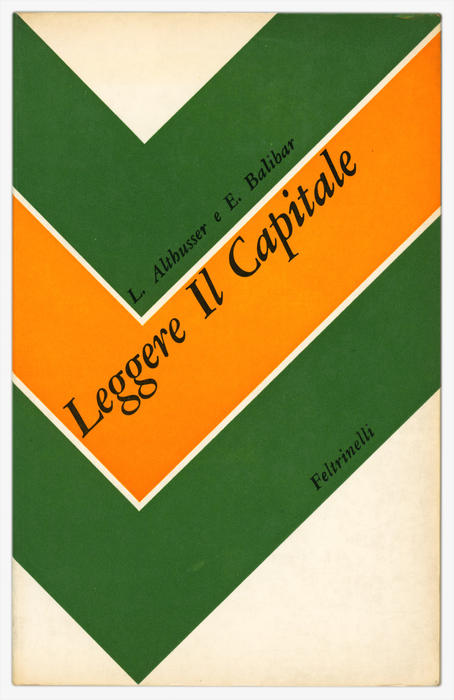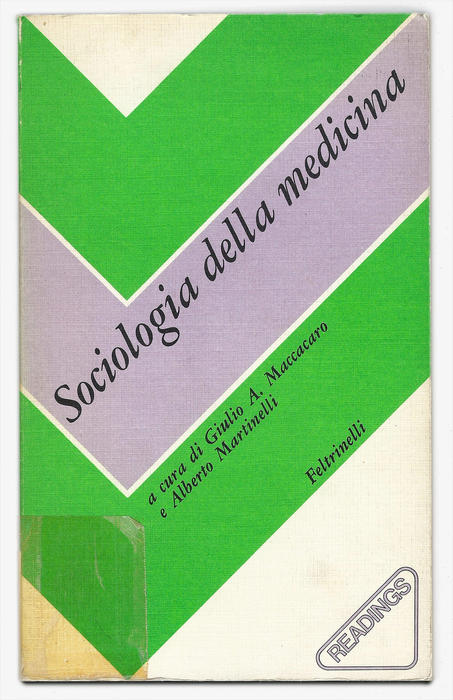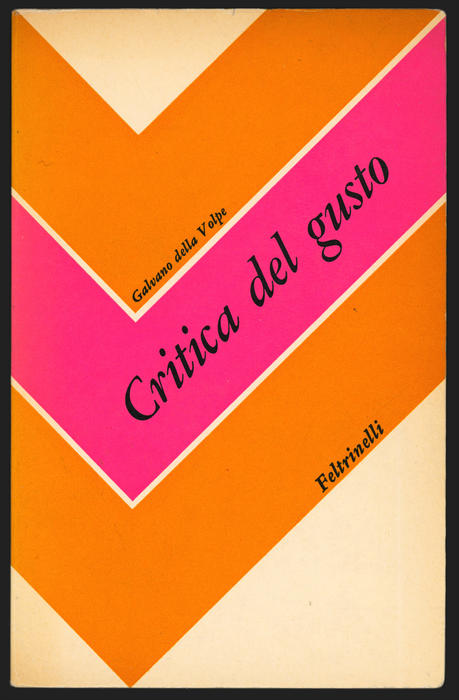Feltrinelli SC/10
Unimark, 1965
Part of Sezione Tascabili
"In Italy, the cultural book almost has always a price higher than the average reader can afford", and for this reason "SC/10 is not only a new series, but also - and above all - a new and modern editorial concept: a high quality paperback, as it was called in America and England, that is the economic edition, thanks to a high circulation, of works of a high cultural and scientific level". Thus in 1966 the series of classical, ancient and modern texts and contemporary essays was inaugurated.
While SC stands for "Serie Cultura" (Culture Series), it's not clear whether the "10" has a particular meaning, as it is the only series to have a code name. What we know, however, is that the graphic layout was assigned to an iconic agency: Unimark International. This happens in the same period in which the Feltrinelli bookstores are experimenting with unconventional methods to be more "pop", close to the consumer (installing pinball machines, organizing meetings with the authors, offering roasted chestnuts). Also, in those years, "books become more aggressive, freer, more nervous: the young man understood that subversion is now done otherwise, that gestures must become more radical and more unscrupulous." (Enrico Filippini, from a 1979 article)
The result is, as the Biblioteca Sansoni the year before, an object that distorts the conventions of creating book covers, drawing on contemporary art but without abandoning the characteristic Garamond that distinguished all Feltrinelli books. The bright colors burst into the Feltrinelli catalog, so far dominated by white, black and red, at the same time as a restyling of the "I narratori" series, and the introduction of "Scienza Nuova", "I protagonisti" and "l'URSS" , again by Bob Noorda with Massimo Vignelli at Unimark. A V of three alternating two-color bands cuts the cover, and the Garamond texts, including the summary on the back cover, follow the 45-degree orientation of the sign. This V, in recent times also interpreted as an inclined F (by Feltrinelli), is actually borrowed from a series of paintings by Kenneth Noland, contemporary with the first editions. Vignelli himself also specifies an inspiration from the lines and colors of Frank Stella, in addition to those of Noland.
In the first pages, under the copyright to Giangiacomo Feltrinelli, the words “Design: Bob Noorda & Massimo Vignelli / Unimark” are reported. However, Salvatore Gregorietti, who at the time had just started working at Unimark Milan in charge of developing this series, reveals in an interview that the design of the SC/10 covers was exclusively by Vignelli - a plausible claim given the lack of similarity with the works of Noorda already performed at Vallecchi (which instead have similarities with other new Feltrinelli series such as "I narratori" or "I protagonisti") and the more typically Vignellian modus operandi of borrowing concepts from modern art and architecture.
SC/10 continues unchanged until at least 1983, the year in which a new coordinated identity for Feltrinelli begins to be implemented by Bob Noorda and Salvatore Gregorietti and many of the essays are re-edited under the “Campi del sapere” series.

Erich Auerbach, "Studi su Dante"
SC/10 1, March 1977 (5a edizione)
Galvano della Volpe, "Critica del gusto"
SC/10 4, April 1966 (1st edition)

Louis Althusser, Etienne Balibar, "Leggere il Capitale"
SC/10 33, March 1971 (1a edizione)

Georges Sadoul, "Storia del cinema mondiale, Volume 1"
SC/10 39, June 1972 (1a edizione)

Giulio A. Maccacaro, Alberto Martinelli, "Sociologia della medicina"
SC/10 Readings 6, October 1977 (1a edizione)
Feltrinelli
Having perceived the risk that the proliferation of print media could take away the meaning of the role of the publisher, Giangiacomo Feltrinelli speaks of "necessary publications": novels that capture the changes in the intellectual, aesthetic, moral levels of the world, political books that accompany political actions, texts for an audience that wants to know. Thus "Giangiacomo Feltrinelli Editore" was born in 1955 from the ashes of the Cooperative of the popular book (Colip) from which he obtained the catalog of the economic universal.
From the beginning, parallel to the cultural aspirations, the commercial will of the founder to also control the distribution and sale of books was configured, with the opening initially in Pisa and then in Milan, Genoa, Florence and Rome of "Librerie Feltrinelli" .
The watchword is to get people to buy books at all costs, while clearly interpreting the moods of the public of the 1960s. The business continues even after the tragic death of the founder, with a first major restructuring in 1983 and the expansion of the network of bookstores with the purchase of RicordiMediaStores in 1995. To date, the entire chain of edition, distribution and sale of books remains in the hands of the Effe 2005 holding with 124 bookstores throughout Italy.
Unimark
Founded in 1965 by Ralph Eckerstrom, Herbert Bayer, Massimo Vignelli, Larry Klein, James Fogelman and Bob Noorda, at the point of maximum expansion it had offices in Chicago, New York, Milan, Detroit, Johannesburg, Cleveland, Denver, London, San Francisco , Palo Alto, Aspen, Melbourne and Copenhagen. In the Milan studio worked designers including Bob Noorda, Salvatore Gregorietti, Franco Mirenzi, Antonio Tabet, Jean Stael von Holstein and Mauro Boeri. The New York studio, located in the prestigious Seagram Building, was instead directed by Massimo Vignelli.
At the basis of the studio's activity, the conception of a graphic no longer made individually, but the result of the activity of several people with different backgrounds and skills and the aspiration to extend the idea of corporate identity. The studio carries out projects for Ford, Panasonic, Knoll, JCPenney, Dreher, Memorex, America Airlines, Dalmine, Agip petroli, Volvo, Pirelli, Central National Bank, Trans Union, Brionvega, la Rinascente and others. Signs for the New York and Sao Paulo subways in Brazil are among the most significant achievements.
Unimark simultaneously represents the success and failure of adopting a modern aesthetic of the Swiss school as a business of international proportions. Helvetica became the face of an era in a few years, but the sensational expansion of the studies turned into millions of dollars in debt in just a few years. Massimo Vignelli left Unimark in 1971, when the growth of the agency began to stagnate, even the Milan studio became independent soon after. Officially the last project is dated 1977, at the conclusion in 1979 there was now only the Chicago office with a few helpers around Ralph Eckerstrom.
